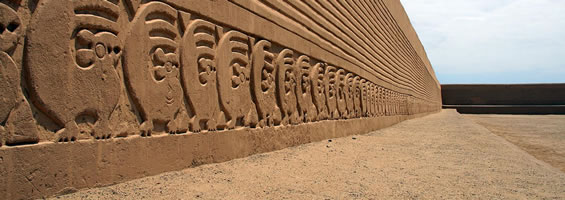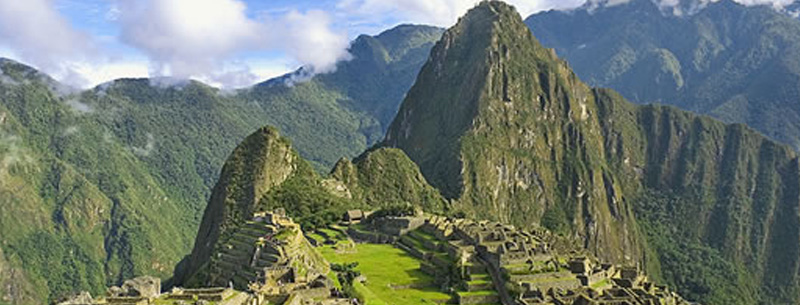Peru has a great legacy of the Inca culture. From the last century, Peruvians are recovering all knowledge of The Incas, for example, sacrifice, offerings, and rituals, besides all these offerings and sacrifices are realized to reach favors and assistances to their mountains. One of them was to keep the health to work and living from the land; therefore the Incas worshiped the Apus (mountains) and Pachamama (the same land) to have a long life. They buried offerings like “Despachos” and “Pagos” in some sacred mountains (Apus).
Legacy of Incas
People who need a favor or miracle burn special things called “despachos” and they offer in secret and silent places to the Mountains at nights. As an additional note, people who pass by these secret places cannot see the offering ashes, because the curse may turn you, this is known as “Kutihiskka”. The Despachos are package formed with different objects; most of them are singular objects, for example, many candies, alpaca dry fat, little cruises, inter alia.

The principal aspect of the Despachos is the power that the Andes Mountains have to give the curse to another person. A “curandero” is the person who prepared this kind of gift to the Andes. Nowadays, there are fewer “curanderos” in Peru, but they are respected by all his people.
Another example of the mystical legacy of The Incas is Scissors Dance. Violin and harps play music while a man dances with scissors in right hand making aerobic exercises and stunts. Jose Maria Arguedas called this incredible dance as “La Danza de las Tijeras” (Scissors Dance). It is a typical dance in the central Andes. Its history began when the Spanish pursued to scissors dancers, because they were children of the warlock men (Curanderos), for this reason, they hid in the mountain caves, so people around the mountains called them: children of the Devil.
In the Republic age, they came back to cities and towns, and governors and mayors obligated them to participate in Processions, thus they were known as “supaypawawan” in Quechua. A “danzaq” was considered as a priest in his community. The local legends talk us about a pact of blood between the “danzaq” and the devil.
Another important legacy of Incas is the Ayahuasca. This is a mystical potion in Inca’s time. This infusion is made with a medicinal plant, known as Ayahuasca (a type of jungle lianas) and Jurema (another hallucinogenic plant). In the Quechua language, Ayahuasca means “Rope dead” because The Incas believed that the potion had the power to come back to you from the world of the death if you drank it.

By the way, The Ayahuasca Ritual is magic, a Chaman or curandero (guide) conduct the Ayahuasca ceremony at night. Like Yoga sequences, this ceremony has steps: first, the Chaman sings the Incas songs, after that, visitors and tourists drink the Ayahuasca potion, and they have visions and hallucinations, after two hours, tourists begin to wake up of their solid dreams. Some people say that you can see your past and future, but other people say that you can face your fears. The last years, pharmacy education is considering these types of potions in its Natural medicine section.
All cultures of the world have different types of mystical legacy, for example, in the oriental side, we can find several types of yoga, Buddhism in India, and Masai and Yoruba medicine in Africa, therefore Andean culture cannot be absent of the traditional legacy. The mystical tourism is growing faster in the last years and Peru is the most important country to enjoy this type of tourism. Undoubtedly, The Incas Empire was a Mystical and magical place.
Inca Life & Achievement
In less than a century, the Incas developed and knitted together a vast empire peopled around twenty million Indians. They established an imperial religion in some harmony with those of their subject tribes; erected monolithic fortresses, salubrious palaces and temples; and, astonishingly, evolved a viable economy, strong enough to maintain a top-heavy elite in almost godlike grandeur.
To understand these achievements and get some idea of what they must have meant in Peru five or six hundred years ago, you really have to see for yourself their surviving heritage: the stones of Inca ruins, museums, archeology, temples(Koricancha or Santo Domingo Temple). We recommend you visit some of the most important museums and Inca ruins of Peru.
Religion in Peru
Supposedly the Inca religion was easily capable of incorporating the religious features of most subjugated regions. The setting for beliefs, oracles and idols, more or less throughout the entire empire. The main religious novelty introduced with Inca domination was their demand to be recognized as direct descendants of the creator-god Viracocha . A claim to divine ancestry was, to the Incas, a valid excuse for cultural and military expansion. There was no need to destroy the oracles and huacas of subjugated peoples; on the contrary, certain sacred sites were recognized as intrinsically holy.
Inca society
At the time Inca, Inca developed a hierarchical structure. At the highest level, it was governed by the Sapa Inca, son of the sun and direct descendant of the God Wiracocha. Under him were the priest, nobles the royal allyu or kin-group which filled most of the important administrative and religious posts and, working for them, regional allyu chiefs, curacas or orejones, responsible for controlling tribute from the peasant base. One-third of the land belonged to the emperor and the state, others to the high priests, gods, and the sun, the last was for the allyu themselves.
Arts and Crafts
The art old Inca is characterized by its simple style and the high level of technical elaboration with simple means.
More than a set of innovating forms, their artistic manifestations supposed continuity with the previous traditions, being elaborated on the textiles, orfebrería, the stonework, and the ceramics. From a modest local experience, the Incas developed a simple art to which they were incorporating the techniques and the ability of the conquered towns.
Agriculture, Economy & building
To the being the Andes a society predominantly agriculturist, the Incas knew to take advantage of to the maximum the ground, winning the adversities that offered the rough Andean land and the inclemencies to them of the climate.
The adaptation of agricultural techniques that already were used previously in different parts, allowed the Incas to organize the product production diverse, as much of the coast, mountain range, and forest, to be able to redistribute them to towns that did not have access to other regions.
Peru Music
The old Peruvian musical traditions are those of the Amerindians of the Andes. Its music is very well-known outside the country through the characteristic panpipes of poncho-clad folklore groups. However, there are more rhythms and popular music found here deserve a lot more recognition, including chica and huayno, still relatively unknown abroad, as well as the distinct coastal tradition of Afro-Peruvian music, rooted in black slaves brought to work in the mines.
Huayno
Maybe the expression of Pre-Columbian music is huayno, which is popular throughout Peru, its modern center of innovation, as well as the other Andean countries of Ecuador, Chile, and Bolivia. Modern singers like Picaflor de los Andes, Eusebio Grados(El chato grados), Flor Pucarina, and El Jilguero de Huascaran have become superstars in Latin America.
Chicha
Chicha is a fusion of huayno, rock and roll, and cumbia. It arose in places like Lima, Huancayo, and Arequipa, soon spreading throughout Peru. The first chicha hit song was “La Chichera” by Los Demonios de Mantaro. Other famous performers include Mirlos, Pastorita Huaracina, and Los Shapis. One of the last recognized artists is Chacalón, who died some years ago and was known because of his hit “Soy provinciano”, which its lyrics tell about the life for country people in Lima.
